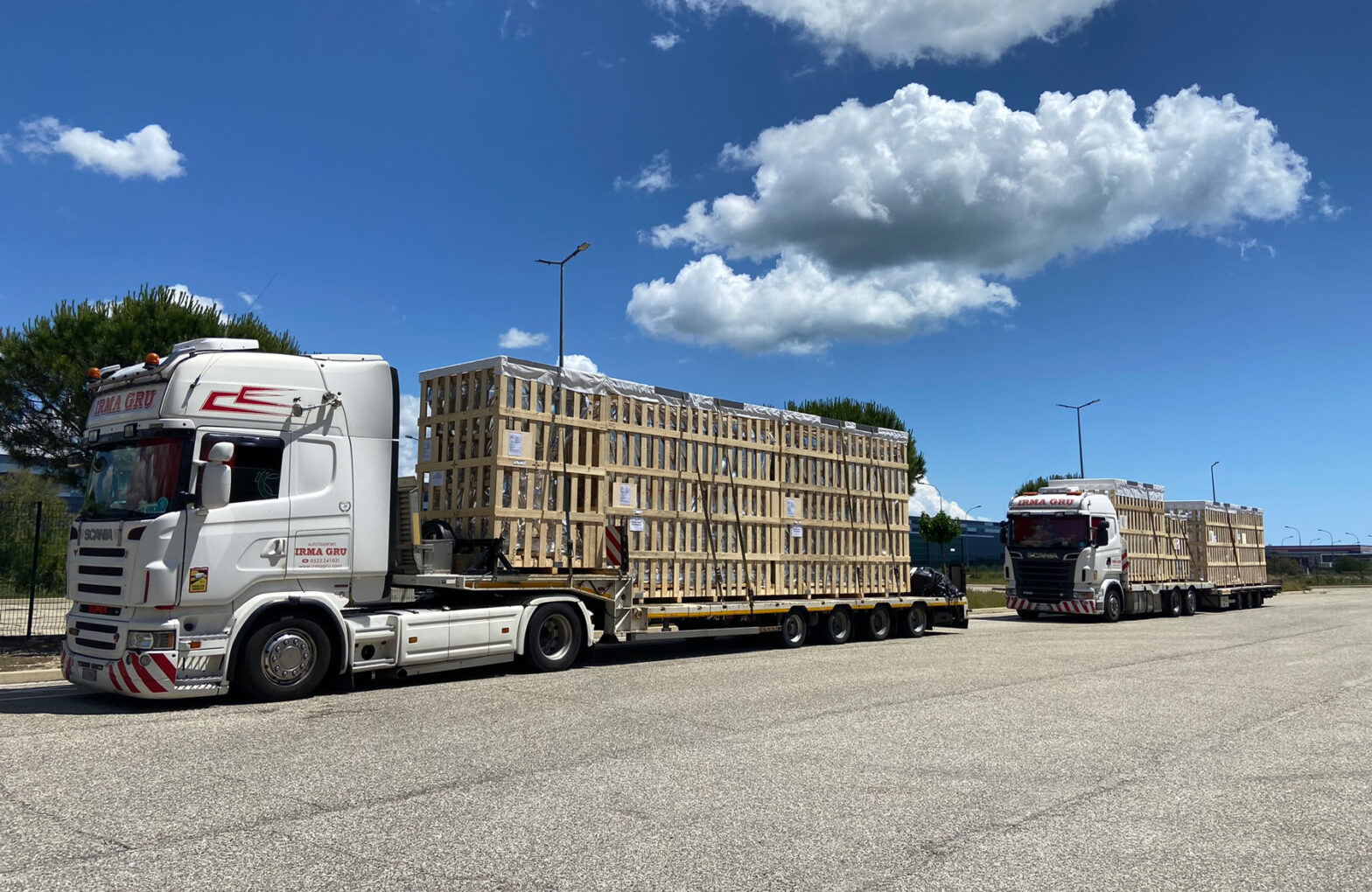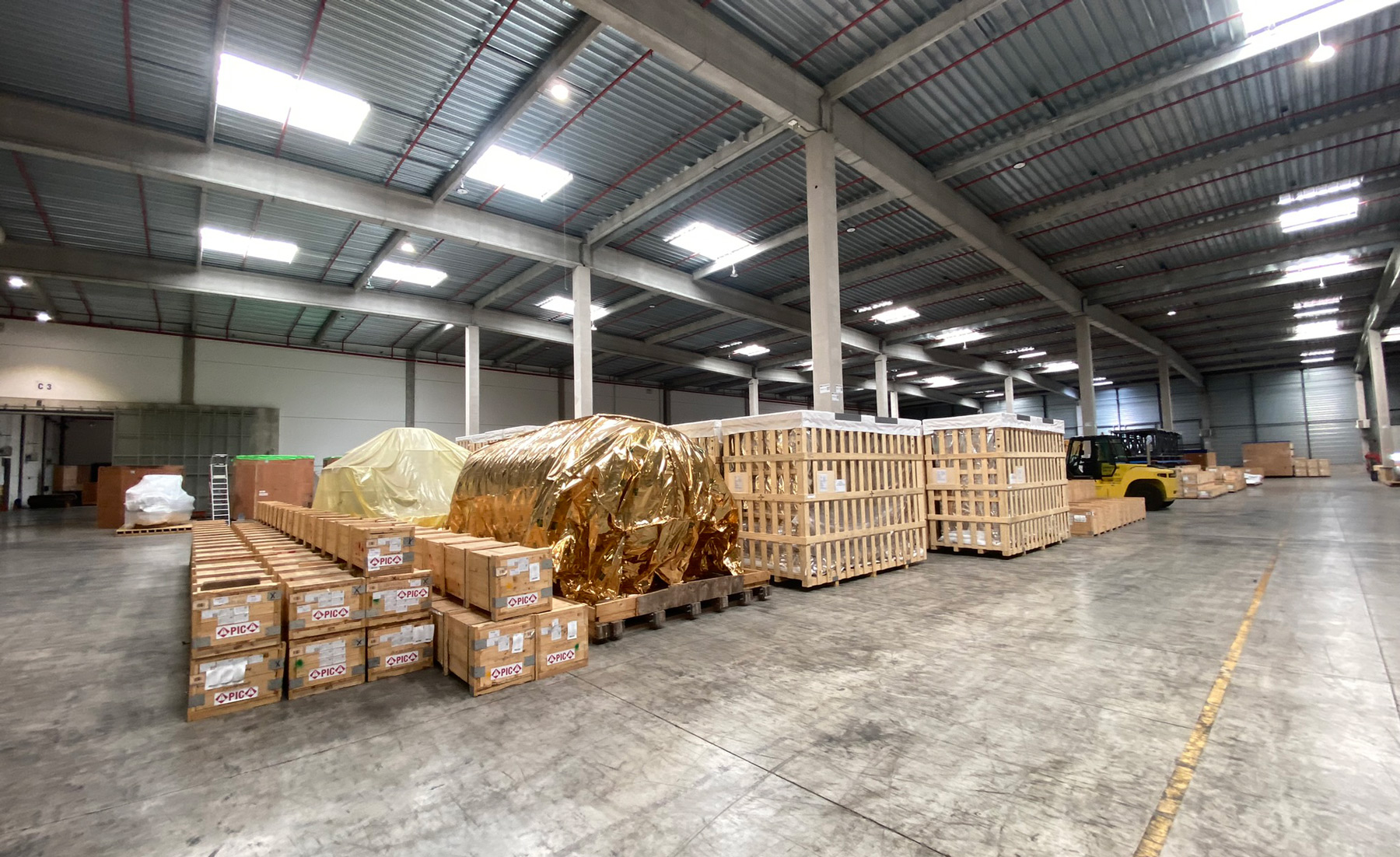First deliveries to light ITER’s Neutral Beams

The Acceleration Grid Power Supplies arrived to the ITER offsite warehouse protected in anti-moisture wrapping and wooden crates. May 2024. ©F4E
Warming ITER’s plasma at temperatures of around 150 million °C, necessary for a fusion reaction, will require a powerful electrical infrastructure. Outside the Tokamak Complex, a vast range of converters, transformers and other equipment will feed with -1 MV ultra-high voltage the two Neutral Beam injectors (NBIs). These are some of ITER’s heating systems, to which F4E is a main contributor.
The NBIs can be seen as giant energy pistols shooting high-speed uncharged particles that collide into the plasma to keep it burning. The injectors create an ion beam, accelerate it to an energy of -1 MeV and neutralize it so it can penetrate the magnetic field of the Tokamak. This pulsed sequence will be lit by a set of power supplies (PS), distributing voltage and current along the different sections of both NBIs. Europe and Japan are sharing the procurement for the PS, contractually divided in four sub-systems.
Given the unprecedented dimensions of the NBIs, both parties first produced the PS units for MITICA (Megavolt ITER Injector and Concept Advancement). This is a real-size prototype of ITER’s injectors, set up together with ITER Organization (IO) and Consorzio RFX and located in a facility in Padua, Italy. After testing successfully the MITICA units of the PS on dummy loads, the F4E and IO teams gave the green light to the different European contractors for the fabrication of the ITER units
The earliest to make it to ITER was a batch of the conversion systems of the Acceleration Grid Power Supplies (AGPS-CS), delivered this May and manufactured by NIDEC ASI, an Italian medium-size company. This equipment will serve the five-stages acceleration of the ion beam. It will take power from the grid at 22kV AC (Alternating Current) and, together with five high-voltage DC (Direct Current) generators produced by ITER Japan, will convert it into 1 MV DC.
“Our collaboration with NIDEC started in 2015 with the designs for MITICA. The factory and site acceptance tests certified that the AGPS met the requirements, and thus we could start producing the units for ITER”, explains Daniel Gutiérrez, F4E’s technical officer following the contract. “We are especially proud as this marks the very first onsite delivery for the Neutral Beam heating system. More will arrive in the coming months”, he celebrates.

The Residual Ion Dump Power Supplies (RIDPS) are also close to completion. They will provide an average voltage of 25 kV to the sub-component removing non-neutralised ions. Their transportation to Cadarache is expected in September, from the factory of OCEM PE in Bologna, Italy. The same contractor will manufacture the Ion Source and Extraction Power Supplies (ISEPS), currently undergoing design improvements after the tests in MITICA.
The size, complexity and voltage levels of these systems confronted the teams with considerable technical challenges. “Experience is essential to foresee and fix problems that come with such kind of technology. That’s why Japan was the right partner to procure the NB power supplies alongside Europe, since they worked with the Neutral Beam of JT-60SA, operating at half the voltage of ITER’s, at 500KV”, notes Daniel Gutierrez.
Operators inspecting and repairing the higher voltage equipment will have an additional obstacle – an imposing one, in fact. The High Voltage Deck (HVD1) is a 740-cubic-meters metal box which hosts the ISEPS. Acting like a Faraday cage, it stands 6 m above ground level and it is polarized at –1 MV. This first-of-a-kind sub-system, procured by F4E and manufactured by SIEMENS, is expected in ITER by 2025.
As they arrive onsite, ITER Organization will put the different PS in storage. They will await their turn to be installed in the Neutral Beam Power Supplies buildings, now nearing completion. From there, they will be integrated and connected to the NBIs in the Tokamak complex via transmission lines. For now, they will withhold their fire to release it once the rest of plasma components are installed.